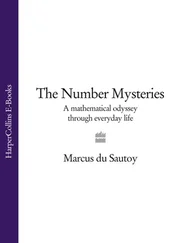Dirichlet, whose lectures Riemann had attended in Berlin, was appointed to Gauss’s vacant chair. Dirichlet was to bring to Göttingen some of the intellectual excitement that Riemann had enjoyed when he was in Berlin. An English mathematician recorded the impression that a visit to Dirichlet in Göttingen made on him at this time: ‘He is rather tall, lanky-looking man with moustache and beard about to turn grey … with a somewhat harsh voice and rather deaf: it was early, he was unwashed and unshaved and with his schlafrock [dressing gown], slippers, cup of coffee and cigar.’ Despite this Bohemian exterior, there burned inside him a desire for rigour and proof that was unequalled at the time. His contemporary in Berlin, Carl Jacobi, wrote to Dirichlet’s first patron Alexander von Humboldt that ‘Only Dirichlet, not I, nor Cauchy, not Gauss, knows what a perfectly rigorous proof is, but we learn it only from him. When Gauss says he has proved something, I think it is very likely; when Cauchy says it, it is a fifty-fifty bet; when Dirichlet says it, it is certain.’
The arrival of Dirichlet in Göttingen began to shake the social fabric of the town. Dirichlet’s wife, Rebecka, was the sister of the composer Felix Mendelssohn. Rebecka loathed the dull Göttingen social scene and threw numerous parties trying to reproduce the Berlin salon atmosphere she had been forced to leave behind.
Dirichlet’s less formal approach to the educational hierarchy meant that Riemann was able to discuss mathematics openly with the new professor. Riemann had become rather isolated on his return from Berlin to Göttingen. The combination of Gauss’s austere personality in later life and Riemann’s shyness meant that Riemann had discussed little with the great master. By contrast, Dirichlet’s relaxed manner was perfect for Riemann who, in an atmosphere more conducive to discussion, began to open up. Riemann wrote to his father about his new mentor: ‘Next morning Dirichlet was with me for two hours. He read over my dissertation and was very friendly – which I could hardly have expected considering the great distance in rank between us.’
In turn, Dirichlet appreciated Riemann’s modesty and also recognised the originality of his work. On occasions Dirichlet even managed to drag Riemann away from the library to join him on walks in the countryside around Göttingen. Almost apologetically, Riemann wrote to his father explaining that these escapes from mathematics did him more good scientifically than if he had stayed at home poring over his books. It was during one of his discussions with Riemann whilst walking through the woods of Lower Saxony that Dirichlet inspired Riemann’s next move. It would open up a whole new perspective on the primes.
The zeta function – the dialogue between music and mathematics
During his years in Paris in the 1820s, Dirichlet had become fascinated by Gauss’s great youthful treatise Disquisitiones Arithmeticae . Although Gauss’s book marked a beginning of number theory as an independent discipline, the book was difficult and many failed to penetrate the concise style Gauss preferred. Dirichlet, though, was more than happy to battle with one tough paragraph after another. At night he would place the book under his pillow in the hope that the next morning’s reading would suddenly make sense. Gauss’s treatise has been described as a ‘book of seven seals’, but thanks to the labours and dreams of Dirichlet, those seals were broken and the treasures within gained the wide distribution they deserved.
Dirichlet was especially interested in Gauss’s clock calculator. In particular, he was intrigued by a conjecture that went back to a pattern spotted by Fermat. If you took a clock calculator with N hours on it and you fed in the primes, then, Fermat conjectured, infinitely often the clock would hit one o’clock. So, for example, if you take a clock with 4 hours there are infinitely many primes which Fermat predicted would leave remainder 1 on division by 4. The list begins 5, 13, 17, 29, …
In 1838, at the age of thirty-three, Dirichlet had made his mark in the theory of numbers by proving that Fermat’s hunch was indeed correct. He did this by mixing ideas from several areas of mathematics that didn’t look as if they had anything to do with one another. Instead of an elementary argument like Euclid’s cunning proof that there are infinitely many primes, Dirichlet used a sophisticated function that had first appeared on the mathematical circuit in Euler’s day. It was called the zeta function , and was denoted by the Greek letter ζ. The following equation provided Dirichlet with the rule for calculating the value of the zeta function when fed with a number x :
To calculate the output at x , Dirichlet needed to carry out three mathematical steps. First, calculate the exponential numbers 1 x , 2 x , 3 x , …, n x , … Then take the reciprocals of all the numbers produced in the first step. (The reciprocal of 2 x is 1/2 x .) Finally, add together all the answers from the second step.
It is a complicated recipe. The fact that each number 1, 2, 3, … makes a contribution to the definition of the zeta function hints at its usefulness to the number theorist. The downside comes in having to deal with an infinite sum of numbers. Few mathematicians could have predicted what a powerful tool this function would become as the best way to study the primes. It was almost stumbled upon by accident.
The origins of mathematicians’ interest in this infinite sum came from music and went back to a discovery made by the Greeks. Pythagoras was the first to discover the fundamental connection between mathematics and music. He filled an urn with water and banged it with a hammer to produce a note. If he removed half the water and banged the urn again, the note had gone up an octave. Each time he removed more water to leave the urn one-third full, then one-quarter full, the notes produced would sound to his ear in harmony with the first note he’d played. Any other notes which were created by removing some other amount of water sounded in dissonance with that original note. There was some audible beauty associated with these fractions. The harmony that Pythagoras had discovered in the numbers made him believe that the whole universe was controlled by music, which is why he coined the expression ‘the music of the spheres’.
Ever since Pythagoras’ discovery of an arithmetic connection between mathematics and music, people have compared both the aesthetic and the physical traits shared by the two disciplines. The French Baroque composer Jean-Philippe Rameau wrote in 1722 that ‘Not withstanding all the experience I may have acquired in music from being associated with it for so long, I must confess that only with the aid of mathematics did my ideas become clear.’ Euler sought to make music theory ‘part of mathematics and deduce in an orderly manner, from correct principles, everything which can make a fitting together and mingling of tones pleasing’. Euler believed that it was the primes that lay behind the beauty of certain combinations of notes.
Many mathematicians have a natural affinity with music. Euler would relax after a hard day’s calculating by playing his clavier. Mathematics departments invariably have little trouble assembling an orchestra from the ranks of their members. There is an obvious numerical connection between the two given that counting underpins both. As Leibniz described it, ‘Music is the pleasure the human mind experiences from counting without being aware that it is counting.’ But the resonance between the subjects goes much deeper than this.
Mathematics is an aesthetic discipline where talk of beautiful proofs and elegant solutions is commonplace. Only those with a special aesthetic sensibility are equipped to make mathematical discoveries. The flash of illumination that mathematicians crave often feels like bashing notes on a piano until suddenly a combination is found which contains an inner harmony marking it out as different.
Читать дальше












